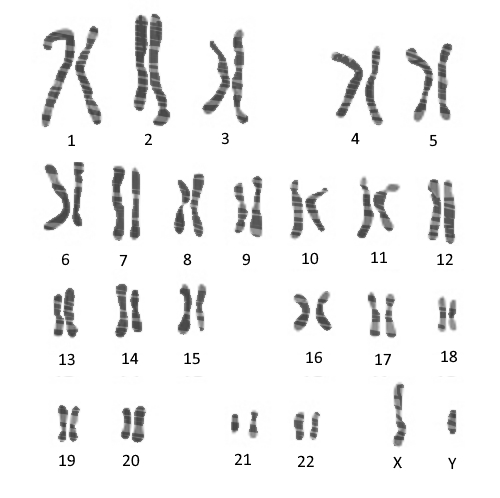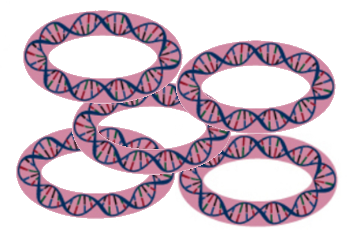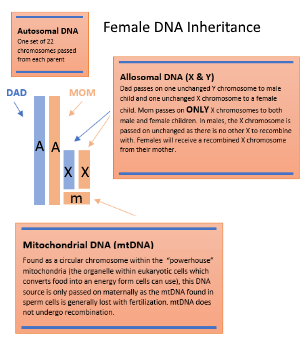
Hello and welcome to our blog! We hope to offer valuable information to our followers on the details of genetic genealogy, its application, and our journey into this rapidly advancing technology. As beginners, one of the toughest things to figure out is exactly what all the different types of DNA are, how it’s inherited, and its application to our genealogical research.
For starters, there are 3 different types of DNA which are passed on from parents to child: autosomal, allosomal, and mitochondrial. Autosomal DNA is the “stuff” that tells our bodies how to develop upon conception. Each person [normally] has 22 pairs of autosomal genes. The 22 autosomal pairs are numbered from 1 to 22 based on size from largest to smallest.
 Allosomal DNA, or the “sex chromosomes”, determine the sex of an offspring. Males are determined by the “Y” chromosome, while females carry only 2 “X” chromosomes. With that being the case, a male can pass along either a “Y” chromosome to produce a male offspring, or an “X” chromosome to produce female offspring. Because there is only one “Y” chromosome and one “X” chromosome for males, both chromosomes are passed on unchanged (no recombination) to their offspring.
Allosomal DNA, or the “sex chromosomes”, determine the sex of an offspring. Males are determined by the “Y” chromosome, while females carry only 2 “X” chromosomes. With that being the case, a male can pass along either a “Y” chromosome to produce a male offspring, or an “X” chromosome to produce female offspring. Because there is only one “Y” chromosome and one “X” chromosome for males, both chromosomes are passed on unchanged (no recombination) to their offspring.
This is an important distinction to make and can be very helpful in determining how you might be related to your DNA matches. If you are female and find a potentially close family match, you can compare your “X” chromosomes to help determine how you’re related. A half-sister that shares a full “X” with you will be related paternally, as you would have both inherited the same “X” gene from your father. More about that later.
 The final type of DNA is Mitochondrial DNA. Mitochondrial DNA is found as circular DNA structures and found within the egg cell. For this reason, mitochondrial DNA is only passed on maternally, from mother to child. Although a man inherits his mitochondrial DNA from his mother, he can not pass it on to his children. It is thought that perhaps sperm cells carry some bit of mitochondrial DNA, but that it is destroyed upon conception so it’s never passed on.
The final type of DNA is Mitochondrial DNA. Mitochondrial DNA is found as circular DNA structures and found within the egg cell. For this reason, mitochondrial DNA is only passed on maternally, from mother to child. Although a man inherits his mitochondrial DNA from his mother, he can not pass it on to his children. It is thought that perhaps sperm cells carry some bit of mitochondrial DNA, but that it is destroyed upon conception so it’s never passed on.

